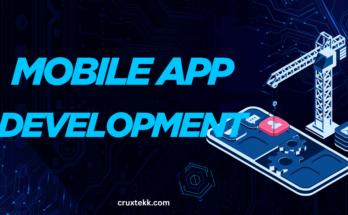In today’s digital age, having a mobile app can transform your business or idea into a powerful, scalable platform. Whether you’re a tech entrepreneur, startup founder, or someone with a brilliant idea, learning how to make an app in 2025 is more achievable than ever.
In this full guide, we’ll walk you through every step — from ideation to launch — using the latest tools and trends in mobile app development.
What is Mobile App Development?
Mobile app development is the process of creating software applications that run on mobile devices like smartphones and tablets. These apps can be developed for different platforms, including Android, iOS, or cross-platform solutions.
With the rise of no-code tools, AI-assisted development, and user-centric design in 2025, making an app has become significantly more accessible — even for non-developers.
How to Make an App: Step-by-Step Guide for 2025
1. Define Your App Idea and Goals
- Start by answering:
- What problem does your app solve?
- Who is your target audience?
- What are your goals — revenue, user engagement, awareness?
2. Research the Market
- Analyze competitors and trends:
- What features do similar apps have?
- What’s missing that you can offer? Use platforms like App Annie, Google Trends, and Sensor Tower to gather insights.
3. Choose the Right Development Approach
- In 2025, you have three primary paths:
- Native development (Swift for iOS, Kotlin for Android)
- Cross-platform frameworks (Flutter, React Native)
- No-code/low-code platforms (Adalo, Glide, Bubble)
4. Create Wireframes and UX Design
Use tools like:
- Figma
- Adobe XD
- Sketch
Focus on a user-friendly experience. Remember, minimal design and dark mode compatibility are hot in 2025.
5. Develop the App
- Choose your tech stack.
- Use backend-as-a-service (BaaS) like Firebase or Supabase to speed up development.
- Integrate AI features like chatbots or personalization if needed.
6. Test Thoroughly
Before launch:
- Do unit testing and UI testing.
- Use real device testing via BrowserStack or TestFlight.
- Collect beta feedback using platforms like TestFairy or Google Play Console beta tools.
7. Launch Your App
Deploy to:
- Apple App Store (requires Apple Developer account)
- Google Play Store (requires Google Developer account)
- Make sure your app follows all guidelines, uses ASO (App Store Optimization), and includes screenshots, icons, and a description.
8. Promote and Maintain
- Run social media ads.
- Collaborate with influencers or tech bloggers.
- Collect user feedback and release regular updates.
Trends in App Development for 2025
AI integration: Voice recognition, chatbots, and personalized user experiences.
AR/VR compatibility: Especially in gaming and e-commerce apps.
5G optimization: Faster data processing for smoother user experiences.
Cross-platform development dominance: Flutter and React Native are leading the way.
Frequently Asked Questions
Q1: Do I need to know coding to make an app in 2025?
A: Not necessarily. No-code tools like Glide, Adalo, or Bubble allow anyone to build functional apps without writing code.
Q2: How much does it cost to develop an app?
A: It can range from $0 (DIY no-code) to $100,000+ (complex custom apps). On average, MVPs can be built for $5,000–$15,000.
Q3: Which platform should I launch first — iOS or Android?
A: If budget allows, go cross-platform. If choosing one, consider your audience — Android has more global reach; iOS users tend to spend more.
Q4: How long does it take to build an app?
A: From idea to launch, expect 3 to 6 months depending on complexity and team size.
Q5: Can I update my app after it’s published?
A: Yes! In fact, frequent updates improve user satisfaction and ASO ranking.
Final Thoughts
Creating an app in 2025 is no longer just for big companies. With the right tools, planning, and mindset, you can turn your idea into a mobile app that reaches users worldwide.Whether you build it yourself or hire a developer, this guide provides the roadmap. Stay updated with tech trends, listen to user feedback, and your app could be the next big thing!




